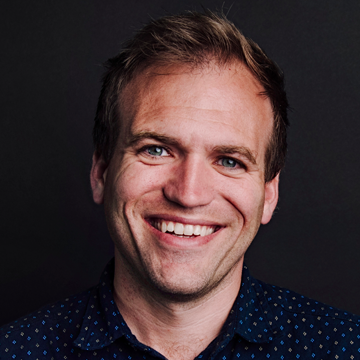BY THE NUMBERS
- Total square footage: 430,000
- Floors: 8 (including two basement levels and two new floors being added onto the existing rooftop)
- Central exhibit floors: 5 (Impact, History and Narrative of the Bible; long-term international libraries; and long-term international museum galleries)
- Construction and property costs: More than $400 million
- Workers on-site daily at construction’s peak: 500 – 600
- Time it will take to read every placard, see every artifact and experience every activity in the museum: 9 days at 8 hours per day
- Floor height (in feet) needed to accommodate exhibits: 25
- Length (in feet) of giant LED ceiling screen running the expanse of the museum’s grand lobby: 200
- Biblical garden: 1 on rooftop
- Ballroom: Dinner seating for 500, lecture-style seating for 1,000
- Performing arts hall seating capacity: 500
- Number of biblical texts and artifacts on display on the History floor alone: More than 500
- Number of blocks from the National Mall: 2 (approximately three minutes walking)
MUSEUM TIMELINE
- 2010: Museum of the Bible established as 501(c)(3) nonprofit
- March 2011: The Museum of the Bible Collection makes public debut to gathering of business, government, academic and religious leaders at the Vatican Embassy in Washington
- July 2012: Washington Design Center purchased for $50 million as site for forthcoming Bible museum
- Summer 2014: Museum architectural concept submission is approved by the U.S. Commission on Fine Arts, the local D.C. Advisory Neighborhood Commission and the D.C. Historic Preservation Review Board; The Terminal Refrigerating and Warehousing Co. building is also designated as a historic landmark by D.C.’s Historic Preservation Review Board
- December 2014: Crews begin interior demolition process, creating a blank slate for new exhibit build-out and working to lower the ground floor to accommodate basement levels and elevator shafts
- February 2015: Major construction begins with the start of demolition on a 1980s-era addition to the historic former refrigeration warehouse that will become the museum
- Late 2017: Anticipated opening date for Museum of the Bible
LEAD BUILDING CONSULTANTS
ARCHITECT
Smith Group JJR, Washington
One of the world’s largest architectural firms with a portfolio that includes the International Spy Museum, the Smithsonian’s National Museum of the American Indian and the National Museum of African American History and Culture
GENERAL CONTRACTOR
Clark Construction, Bethesda, Maryland
Award-winning contractor whose projects include National Museum of African American History and Culture, National Museum of the American Indian and renovation of the White House Visitor’s Center
TECHNOLOGY
Technomedia Solutions, Orlando, Florida
Premier provider of advanced audio-visual and interactive media development and integration services, whose past work includes attractions, museum exhibits and corporate venues like Universal Studios Florida, Cirque de Soleil, Hard Rock Hotels & Cafes, Atlantis Resort, Time Warner Center and the Kodak Theatre
EXHIBIT DESIGNERS
- History Floor Designer: The PRD Group, Chantilly, Virginia
Portfolio includes Smithsonian National Museum of American History, National Museum of Natural History and United States Botanic Garden - Narrative Floor Designers:
- Hebrew Scriptures and New Testament: BRC Imagination Arts, Burbank, California
Oscar-nominated firm whose portfolio includes the Abraham Lincoln Presidential Library and Museum, The Magic of Disney Animation, Disney’s Hollywood Studio Orlando and Steven Spielberg’s Motion Picture Magic, Universal Studios Japan - The Nazareth Jesus Knew and Children’s Gallery: Jonathan Martin Creative, Tulsa, Oklahoma
Past projects include The Holy Land Experience, American Bible Society and Trinity Broadcasting Network - Impact Floor Designer: C&G Partners, New York
Award-winning firm whose projects include U.S. Holocaust Memorial Museum, Metropolitan Museum of Art and logo design for NBC Television Network
LEAD CONTENT CONSULTANTS & SCHOLARS
Dr. Robert Cooley is president emeritus of Gordon-Conwell Theological Seminary, Cooley is recognized widely for his research and writing in the field of archaeology. He has overseen a number of excavation projects in the United States, and during the past 50 years has directed excavations at locations such as Tell Dothan, Khirbet Haiyan, et’Tell and Khirbet Raddana (Ramallah) in Palestine, and at Tell er-Retaba in Egypt. Cooley serves on the board of directors for Museum of the Bible.
Dr. Gordon Campbell is professor of Renaissance Studies at the University of Leicester, England. Campbell is an acknowledged expert on the King James Bible. A frequent lecturer to higher education institutions and at research conferences around the world, Campbell also has decades of research and interaction with Islamic texts and cultures. Campbell serves as a senior scholar for the Museum of the Bible Scholars Initiative, the research arm of Museum of the Bible.
Dr. Byron Johnson is distinguished professor of the social sciences at Baylor University and the founding director of the Baylor Institute for Studies of Religion. He’s known in the academic community for his scientific study of religion and faith-based organizations and partners with the Gallup Organization to explore religious and spiritual issues around the world.
FLOOR-BY-FLOOR OVERVIEW
- Minus 2: Storage, administrative, research labs
- Minus 1: Short-term exhibit space, mechanical/electrical
- First floor: Lobby, atrium, media wall, gift shop, children’s gallery and affiliated libraries, mezzanine with coffee shop
- Second floor: Impact of the Bible gallery
- Third floor: History of the Bible gallery
- Fourth floor: Narrative of the Bible gallery
- Fifth floor: Long-term exhibit space for international museum galleries, performance hall, Museum of the Bible offices, Scholars Initiative offices, conference hall, research library
- Sixth floor: Rooftop biblical garden, viewing gallery, ballroom, restaurant
